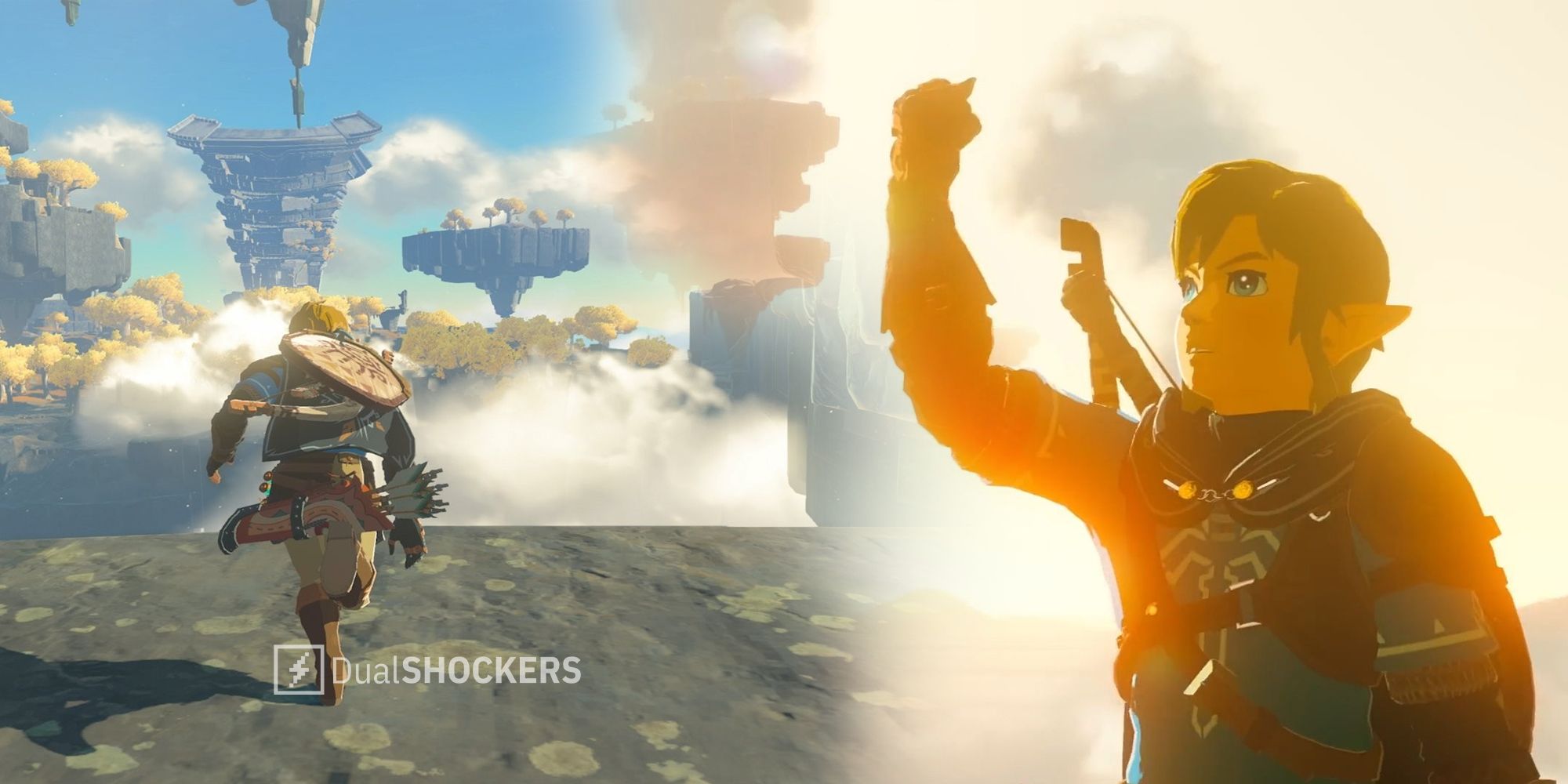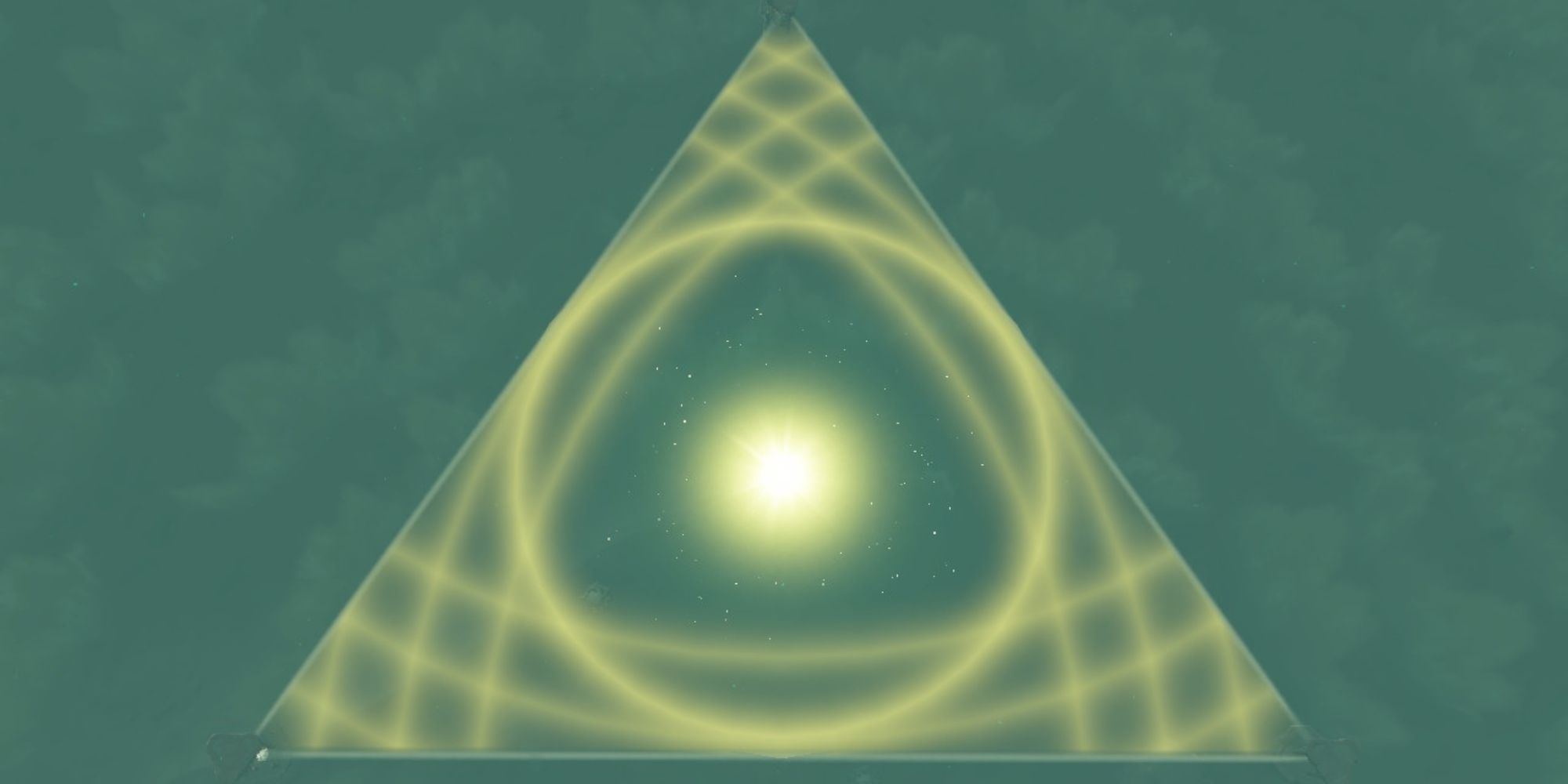This article will include spoilers for main story dungeons in Tears of the Kingdom
The Legend of Zelda: Breath of the Wild had a huge impact on gaming, as exemplified by the verdant realms of Genshin Impact, the puzzle-like microcosms of Sonic Frontiers’ ‘Open Zone’, and the ineffable cozy ambiance of games like Yonder: The Cloud Catcher Chronicles. Now however, Tears of the Kingdom has broken its open world out into a new vertical dimension, and it suddenly makes everything that came before look formulaic by comparison.
Let’s begin by mapping out Tears' incredible world. Each of Tears of the Kingdom's four corners is a unique tapestry of three realms, weaving together a ground layer, a celestial archipelagic layer above, and a subterranean layer below into a reused Hyrule map of arguably similar size as its predecessor.
We'll kick off with that ground layer. The Zora’s pristine aquatic dominion is coated with a slimy sludge, and the Gerudo deserts, now enveloped in sandstorms, are even more enduring than before. The Rito birds currently adopt a cooler, wind-swept lifestyle on stormy mountaintops, while the roundy Gorons hide underground in caves, stiffer and redder than ever (and your main quest is to actually get rid of these not-so-natural disasters permeating the familiar Hyrule areas and bring them back to their proper states).
Though not initially wow-ing me, these new aesthetic retouches and the reused map convey a clear message: Tears of the Kingdom is not concerned this time with the initial allure associated with stretching the map out for the sake of it, but seeing how far it can go and experiment without relying on any extra landmark/quest buffets and triple-the-size-of-France regions and other 'Bloatedlands 3' and 'Assasin's Bloated Odyssey' filler shenanigans.
This becomes evident in the sky realm, which now makes every location feel incredibly layered and labyrinthine. Think of Twilight Princess' City in the Sky dungeon, but propagated to over 100 lookalike islands scattered throughout Hyrule's airspace and integrated into each main story location as a sort of prerequisite. To get to the bottom of each region and its secrets, you'll have to ascend floating waterfalls, rise above swirling sandstorms, soar amidst towering mountains, or plunge into violent tornadoes to examine the regions from a macro, a bird's-eye view. And more often than not, the journey is much more complicated than getting from point A to point B and celebrating with it a dramatic leap of faith.
One main story puzzle, for instance, demanded I locate a droplet somewhere and shoot an arrow through it. After skimming the entire region, I realized that the droplet referred to a cluster of stones that take the form of a water droplet when viewed from a certain angle while standing on a sky island. After shooting the arrow, I had to jump after it and follow the arrow to its landing spot. It was a clever demonstration of how any upper layer or element in the game (whether it’s a mountain or a sky island or just a lonely platform in the air) melds into the fabric of each domain and your visual impression of them.
On occasion, strategic vantage points provide a fortuitous boost to these levitating islands, while at other times, the puzzles silently invite you to fashion your own wings by harnessing Inca-like contraptions such as wind fans and DIY planes. With engines, motorbikes, carts, wheels, batteries, and more at your grasp, you can craft functional vehicles to explore any destinations you find captivating (and there are tons of them visible from anywhere you stand, whether on the ground or in the air).
The challenge lies in actually figuring out how to reach any particular height or distance in your own makeshift style; by putting tantalizing prizes in hard-to-reach places, the game feeds your instincts to push against your limits and figure out how the hell you're going to get inside, for example, that giant ball floating in the sky.
Tears of The Kingdom isn't concerned with rigid sequences that would usually define a mission in an open-world game. For example, It's normal to see identical pillars of different heights each set on a different edge of the arid Gerudo desert with like 10km between them, contraptions that emerge from the midst of nowhere, or lights from distant sources that cast their radiance in seemingly nonsensical directions, yet somehow make sense of it in the context of the same mission.
I first had to elevate myself a bit high to realize that these pillars are not Triforcly-uniform, and confirm how the top-down light should also connect from one platform to another to reenact that iconic Triforce shape using the random platforms. It might seem like a usual Zelda puzzle, but with the vast distance it covers, the sandstorms hindering visibility, and the required bird's eye perspective, you being to feel the puzzles and the environment form a single ecosystem, where you can't see each element as a simple happening in the world or this particular surface you're standing on, but only as an integral part of a linear and greater whole.
All these things–and more–exist in complete harmony, which is made all the more meaningful by the fact that you traverse this world and its secrets with your tools and wits, rather than just wandering about on your legs.
The Chasm–the subterranean realm I affectionately refer to as Hyrule's Caelid for the trepidiation it evokes in me–takes this idea to the next level. Here, your line of sight is restricted by absolute darkness, forcing you to map out the unexplored territory as you venture out with the help of lamp-like fruits to light your way. It's not just one or two areas, but an entire subterranean Hyrule with its own secrets that sometimes play a part in resolving main or side quests as well. It feels like an inverse of the oversight you enjoy in the world above, and I love how raising the difficulty in this game also involves the player's senses and vision in some way, not just some random parameters or gear scores.
Tears Of the Kingdom is a game that really makes the most of its open-worldness, using that world to create larger-than-life puzzles that can encompass entire deserts or skies (not just small areas within empty spaces).
I hope that Tears' vertical open world inspires developers to reach in this bold new direction, instead of flipping the wrong pages of Breath of the Wild's now-sacred tome of open-world design.





